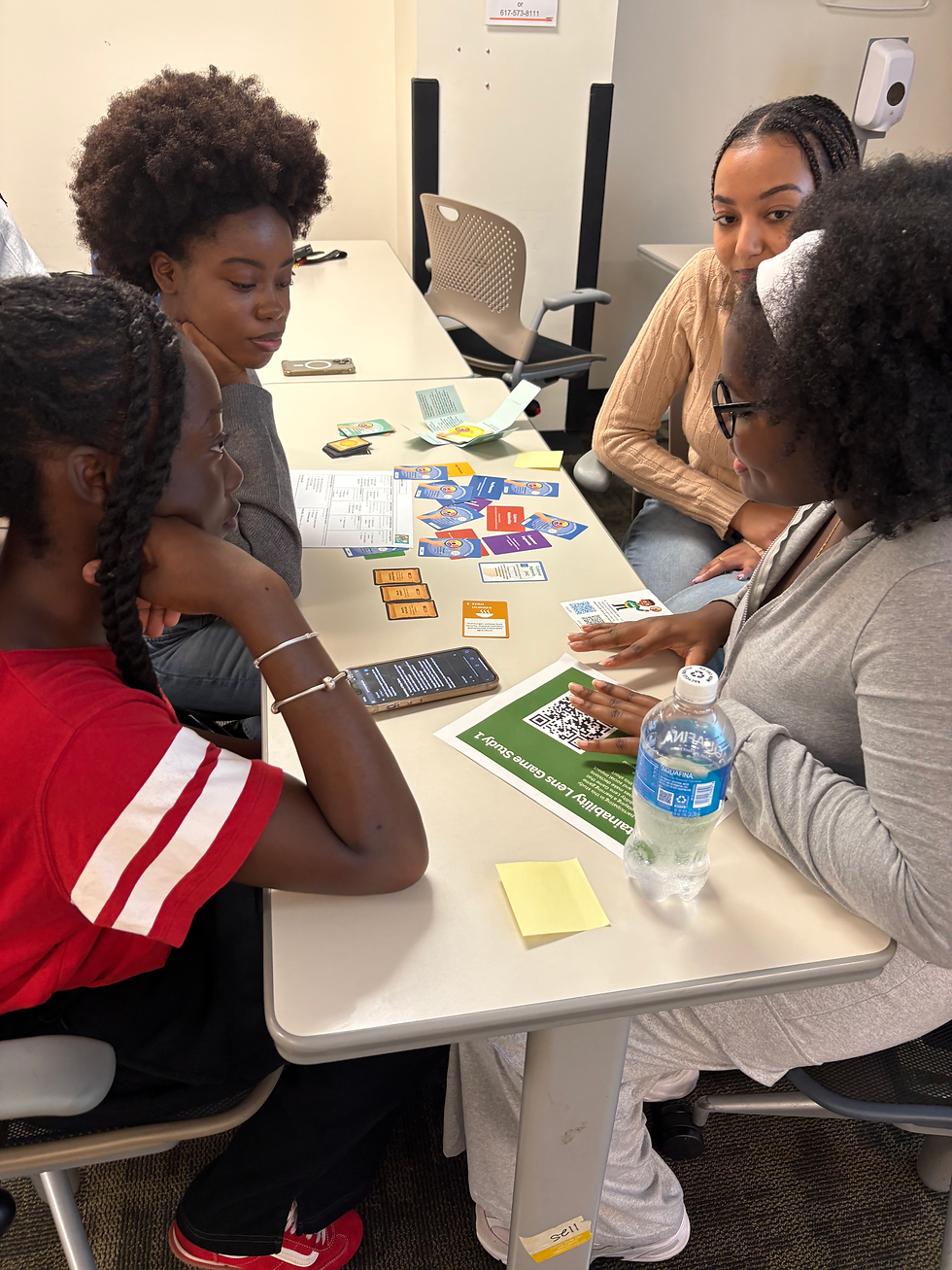Beyond the Board: How the Sustainability Lens Game Powers Real-World SDG Action
- Tamara Stenn

- Jun 18
- 3 min read

In the growing field of sustainability education, games are proving to be more than just fun—they are catalysts for awareness, reflection, and even systemic change. Among the many serious games developed to support the United Nations Sustainable Development Goals (SDGs), the Sustainability Lens Game stands out as an innovative, collaborative tool tailored for real-world organizational transformation.
From Classroom to Boardroom: A Shift in SDG Gaming
Many sustainability-themed games—like Be Blessed Taiwan (Tsai et al., 2021) and the SDGs Board Game (Chen & Ho, 2022)—have effectively engaged students by simulating ecological, economic, and social dilemmas. These games build foundational knowledge and spark curiosity through role-play and scenario-based learning. But the Sustainability Lens Game goes further: it brings sustainability learning directly into enterprises and nonprofits, working with real teams to assess and improve their operations in a “boots on the ground” approach.
This shift in focus—from simulated play to applied problem-solving within organizations—marks a powerful evolution in SDG gaming. As Katsaliaki and Mustafee (2015) noted, most sustainability games “help students increase their awareness of real-world issues and comprehension of course subjects” (p. 650). The Sustainability Lens Game builds on this, providing not just awareness but a platform for action.
A Collaborative, Real-World Learning Model
Unlike many board games that operate in hypothetical scenarios, the Sustainability Lens Game is designed to be used by actual teams within businesses, social enterprises, and NGOs. Players examine their organization's activities through sustainability “lenses”—economic, environmental, and social—and identify leverage points for positive change.
What makes it unique is its applied learning framework. Participants work on real challenges their organization is facing, using the game as a collaborative thinking tool. The process helps teams surface blind spots, strengthen shared values, and co-create pathways aligned with the SDGs. This aligns with the goals of education for sustainable development (ESD), which emphasizes not just learning about sustainability but practicing it together in meaningful ways (Chen & Ho, 2022; Senka et al., 2024). This “practicing together” approach also breaks down silos as intra-organizational teambuilding takes place, with participants from different departments or divisions playing the game together.
Bridging Knowledge and Action
One of the challenges in sustainability education is moving from abstract understanding to practical application. As Senka et al. (2024) observed, most environmental games are targeted at younger audiences and do not adequately serve professional learners or institutional decision-makers. The Sustainability Lens Game bridges that gap, offering “experiential learning through interactive games to enhance understanding of the environmental impact of human activities” (p. 3).
In other words, the game doesn’t just raise awareness—it helps change how organizations operate. “Games provide opportunities for users to perform activities in a safe environment where consequences are not real and where hypothesis testing is possible without fear,” write Senka et al. (2024, p. 4). This safe, reflective space is exactly what the Sustainability Lens Game provides—but with the added benefit of making immediate, tangible connections to real organizational systems. Taking a storytelling approach, the Sustainability Lens Game enables proposed changes and impacts to be woven into a larger dialogue for analysis and discussion.
A Meaningful Contribution to the SDG Toolbox
As the SDGs continue to guide global efforts toward a just and sustainable future, tools like the Sustainability Lens Game are crucial. They provide a structure for cross-functional dialogue, uncover insights through systems thinking, and encourage concrete next steps rooted in collective wisdom. This distinguishes the game from others in the field, making it a vital contribution to the toolkit of sustainability practitioners, educators, and changemakers.
In the words of Katsaliaki and Mustafee (2015), serious games are most effective when “the entertainment and learning are seamlessly integrated” (p. 649). The Sustainability Lens Game does just that—only the stakes are real, and so is the potential for transformation.
References
Chen, F.-H., & Ho, S.-J. (2022). Designing a board game about the United Nations’ Sustainable Development Goals. Sustainability, 14(18), 11197. https://doi.org/10.3390/su141811197
Katsaliaki, K., & Mustafee, N. (2015). Edutainment for sustainable development: A survey of games in the field. Simulation & Gaming, 46(6), 647–672. https://doi.org/10.1177/1046878114552166
Senka, G., Tramonti, M., Dochshanov, A. M., et al. (2024). Using a game to educate about sustainable development. Multimodal Technologies and Interaction, 8(11), 96. https://doi.org/10.3390/mti8110096
Tsai, J.-C., Liu, S.-Y., Chang, C.-Y., & Chen, S.-Y. (2021). Using a board game to teach about sustainable development. Sustainability, 13(9), 4942. https://doi.org/10.3390/su13094942



Comments